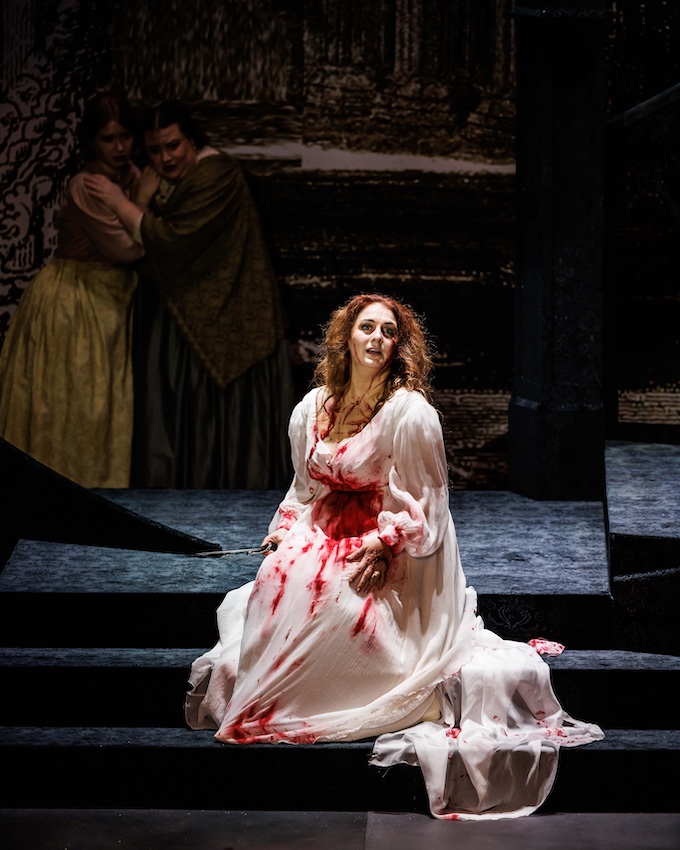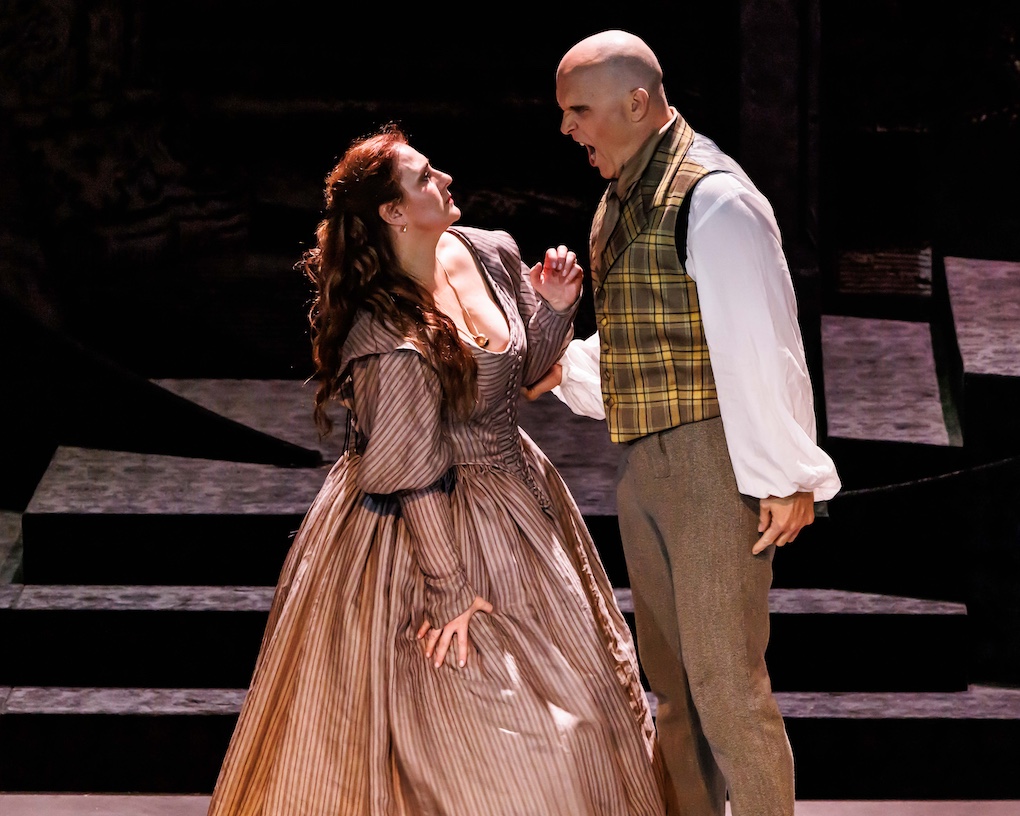Splendidly realised in both dramatic and musical terms, this handsome new staging of bel canto treasure Lucia di Lammermoor sees Melbourne Opera at their confident best.
Welcomed into the Athenaeum foyer by a live bagpiper, the scene is set for the Scottish family politics of Donizetti’s tragic, yet undeniably exquisite, opera Lucia di Lammermoor.
On opening night, FOMO representative Stephen Smith welcomed the audience from the stage, taking the chance to promote the new limited edition souvenir book celebrating the 21-year history of Melbourne Opera*.
In this involving new production, director Suzanne Chaundy successfully focuses upon the psychological turmoil at the heart of the family drama. Updating the action by some 150 years to the 1850s shifts the focus from pretty tartan to a more austere period in which women still have precious little agency.
Maestro Raymond Lawrence delivers another expertly prepared musical performance, conducting the Melbourne Opera Orchestra with flair and precision. Donizetti’s lovely melodies pour forth in delightfully expressive form and Lawrence’s support for the singers is ever exemplary.
Set designer Dale Ferguson provides an atmospheric period setting with a deft modern touch. Given the key brother and sister relationship at play, the opera begins visually with a full size portrait of Enrico and Lucia Ashton as children, projected onto a shimmering backcloth that is torn away to reveal the ominous facade of the Ashton manor, Ravenswood. Ferguson uses an eye-catching framing device, with the backdrop seen within a large black circle. Stairs at stage level work for the external scenes in the grounds and are later expanded for the formal interior where the doomed wedding will occur.
Harriet Oxley uses a muted palette for the attractive costumes, giving greater impact to Lucia’s blood splattered white wedding gown. The artistic decision behind the low wattage of Peter Amesbury’s lighting design is understandable for the period setting and yet there is a degree of frustration at wanting to see the stage and singers more readily.
Her lustrous soprano in peak form, Elena Xanthoudakis gives a memorable performance in the iconic role of Lucia. Xanthoudakis deftly draws affection from the audience in her opening solos, haunting ghost story “Regnava nel silenzio,” and passionate declaration of love “Quando rapito in estasi.” Xanthoudakis enjoys warm chemistry with every partner, even Simon Meadows as Lucia’s insidious brother Enrico.
A highlight of this, and indeed any, performance of Lucia di Lammermoor, the “mad scene” unfolds with frightening believability. Xanthoudakis’ performance of the scene is perfectly calibrated to build gently and avoid histrionics. Xanthoudakis rises to a peak during the soprano and flute cadenza in “Il dolce suono.” Continuing in the cabaletta “Spargi d’amaro pianto,” Xanthoudakis brings a sense of euphoria to Lucia, who is helplessly lost in a world of her mania. Finishing on a ringing high note, Xanthoudakis brings the harrowing sequence to a triumphant close.
Commanding the stage with sharply focused yet neatly understated authority, baritone Simon Meadows is in pristine voice as Enrico. Playing the villain simply as a man doing what is required to survive, Meadows colours Enrico’s steely rule with wonderful warmth in his vocal tone.
As rugged Scotsman Edgardo, true love of Lucia, tenor Henry Choo sings with an appealingly luscious sound. In act one, Choo and Xanthoudakis delight with the eminently hummable duet “Qui di sposa eterna.” Choo has a fiendishly difficult job in following the mad scene but delivers affecting emotion in the final graveyard scene.
Eddie Muliaumaseali’i brings emotional weight and authoritative to sombre chaplain Raimondo, singing the role with touching sensitivity.
Sarah Sweeting is luxury casting as Lucia’s humble handmaid Alisa, bringing tender compassion and singing with characterful flair.
Robert Macfarlane shines in the all too brief role of doomed bridegroom Arturo, singing the role with the merry confidence of a man who sees a bride as his right and had no idea of the deadly consequences to come.
Given the strength of these six lead singers, the famous sextet is, of course, a resounding triumph.
The lead cast is rounded out by tenor Boyd Owen in the featured role of dashing huntsman Normanno.
Making an invaluable contribution to the quality of the musical performance is the dedicated Melbourne Opera Chorus. The resounding vocal strength of the chorus members is ringingly evident throughout the opera, with a clear highlight coming as the wedding guests celebrate in “D’immenso giubilo.”
To enjoy acoustic opera in a traditional theatre in Melbourne this May, attendance at Lucia di Lammermoor is highly recommended.
Lucia di Lammermoor plays at Athenaeum Theatre, Melbourne until 18 May 2024. For tickets, click here.
*Melbourne Opera 21 Years on the Stage is on sale in the Athenaeum foyer during the season of Lucia di Lammermoor.
Photos: Robin Halls






